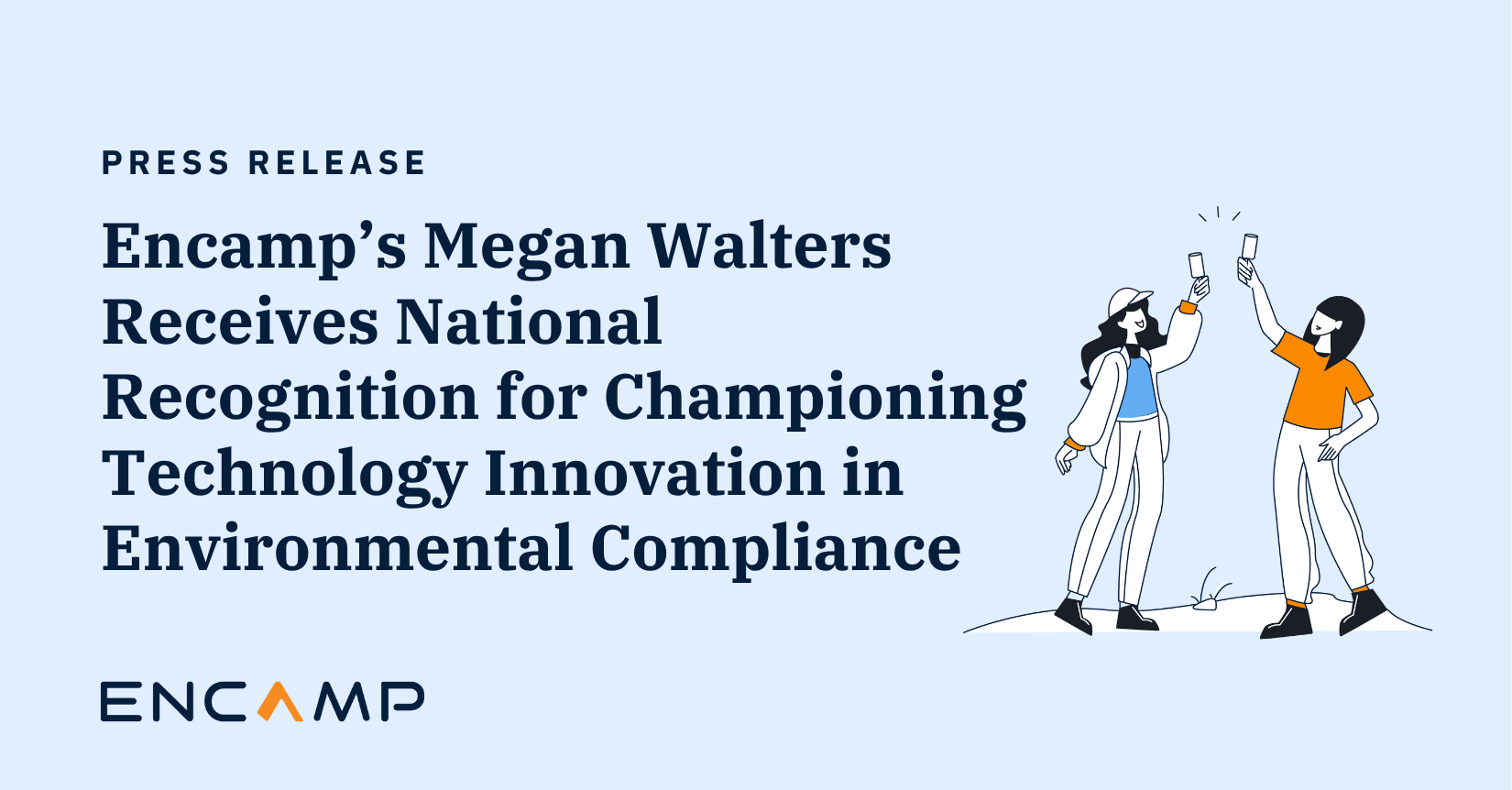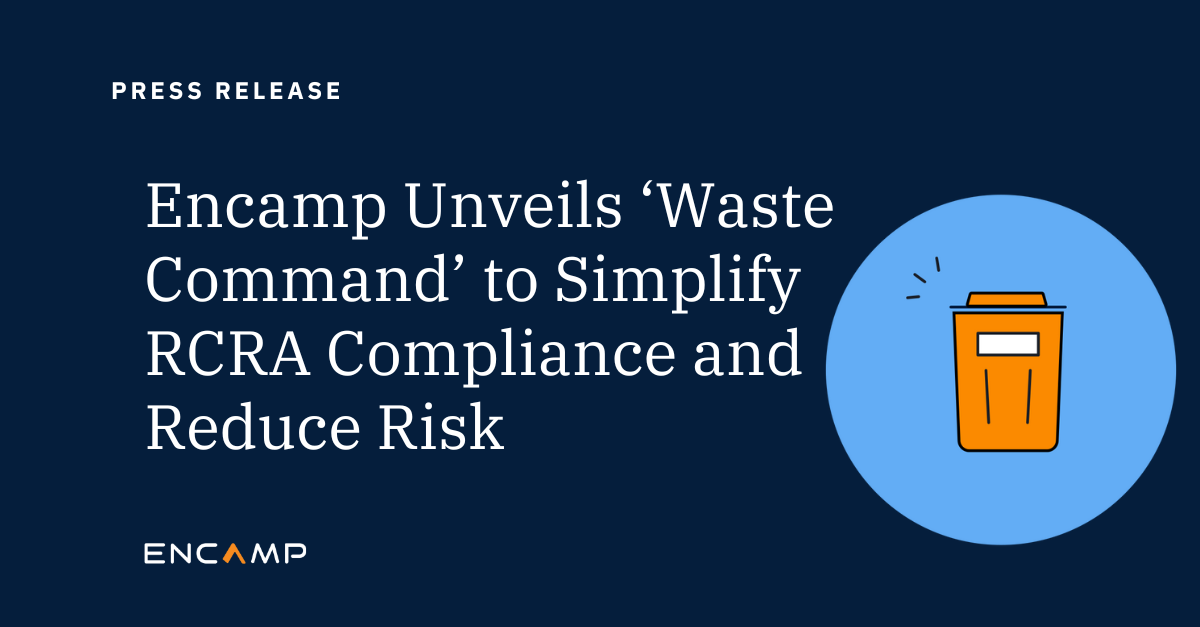Most businesses are driven by departmental functions like HR, IT, finance, sales and marketing, customer support, tech support, etc., etc. And most departmental functions are driven by processes. But are these processes standardized? Repeatable? Digitalized? That is, do they provide access to more information more quickly, enhance efficiency via automation, and lead to higher levels of process improvement and productivity? For environmental compliance, that’s the magic of digital transformation.
The digital transformation movement, which took hold around 2015, has changed how departmental functions work, and sectors such as retail, healthcare, and manufacturing have led the Digital Revolution ever since. These industries in particular have realized the value of digital technologies for functional processes from tracking customer data and maintaining patient records to formulating market outlooks for a new product.
Yet in comparison, the EHS sector has been late to the digital party — especially for environmental compliance and data-intensive processes like Tier II reporting for EPCRA and RCRA. Which is all the more reason EHS leaders should have “going digital” high on their list of technology objectives.
Part of a Guided Environmental Compliance method
The good thing about digital transformation technologies and practices is that it’s never too late to embrace them. In fact, they’re key to the Guided Environmental Compliance method from Encamp that blends high-tech software with high-touch support from our EHS and compliance experts. The method builds on operations in several top-performing companies that have already turned to digital transformation to make environmental compliance and reporting processes simpler and more “intelligent.”
By digitizing data, EHS leaders and their teams make compliance information easier to manage across facilities and dispersed enterprises. And by digitalizing and automating processes within compliance functions, teams standardize tasks like data collection and reporting processes and make them more efficient. In effect, EHS teams reimagine the operational aspects of compliance.
Proactive vs. reactive reporting
For EHS operations everywhere, digital transformation is an opportunity to become more proactive in the way they manage environmental compliance and mitigate the risk of non-compliance events. This coincides with regulators always looking for ways to mitigate the risks from hazardous chemicals in use by industry, and knowing that requirements for EPCRA, RCRA and other regulations will continue to become more complex as a result. (For instance, EPA announced in 2020 a new 3-year compliance initiative to identify ways to reduce risks from onsite hazardous chemicals and accidental releases.)
So why do many companies still run the risk of being out of compliance? Mostly, it’s because they lack knowledgeable staff, technology, and guidance for the compliance and reporting process. Some companies just don’t have the capacity or resources to keep up with constantly-changing regulations and accurately track and manage information for onsite chemicals on a regular basis.
This inability often leads to EHS staff scrambling in January and February to prepare their Tier II reports, even though they know submissions are due every year on March 1. And instead of avoiding the risk of non-compliance, the company elevates it.
Digital transformation helps companies take a proactive approach to environmental compliance and mitigate the risk of non-compliance events.
Are these companies reactive? Yes, but not always by choice. For their EHS operations, this is where digital transformation can help them take a proactive approach to environmental compliance and Tier II reporting for EPCRA and RCRA. By transitioning from what has long been a series of disjointed manual tasks for reporting to a method that emphasizes aspects of digital transformation like digitized data and automation, an EHS operation can centralize critical facility-level data as well as the reporting process. They can also then push data externally to the right state and federal reporting systems in the right format, on time.
Other issues to address proactively
Labor intensive manual work. Collecting information from disjointed point systems and cutting & pasting data from spreadsheets for Tier II reports can require hundreds of dedicated people hours. It takes time away from other compliance programs and tasks.
No central, standard, repeatable process. Many companies execute Tier II reporting at the facility level, leaving it up to someone in operations to collect data, review it, and submit it. From year to year, the process is uneven or started over, and regional or corporate environmental SMEs might or might not be part of it. What happens when the person who’s been doing the report leaves the company or changes roles? Without a single source of the truth, passing down institutional knowledge can be problematic.
Inaccuracies in Tier II reports. Some companies submit Tier II forms just to check the environmental compliance box (sometimes even when they don’t have to). Unfortunately, this often leads to rushed submissions that are error prone, with no QA to fix inaccurate information before forms are submitted.
Back-reporting on missing Tier II filings. According to EPA, facilities discovering they were supposed to file Tier II reports in prior years are obligated to do so in accordance with their state program requirements. Remember, backlogs pile up, and a lack of EHS staff and efficient technology can amplify the problem. If an EHS organization doesn’t have the resources for upcoming Tier II filings, how can it ever plan to address back-reporting?
Zero effective technology innovation for reporting. State and federal reporting portals remain non-standardized and hard to navigate. (Not surprisingly, many state agencies are behind the digital transformation curve.) Being proactive is a necessity to overcome the technology complexities at the state level, especially for companies with operations across multiple states.
Executive visibility, budgeting, and time allocation. Some companies try to manage chemical inventories to avoid Tier II filing requirements. This might be considered a proactive practice, but more often than not, it’s a reactive one due to lack of visibility into onsite chemical inventory data. This can leave companies either late in their reporting or simply out of compliance.
As some companies and their EHS teams have already discovered, the Digital Revolution has given them whole new ways to manage environmental compliance. Digital transformation technologies and practices further help them drive continuous improvement, particularly for Tier II reporting and the other compliance-related issues we just noted.
Here’s what else happens when compliance and Tier II reporting meets digital transformation, which is even more magnified in the Guided Environmental Compliance method.
Collaboration, transparency, and compliance confidence improve
Digital technology (including Encamp) gives EHS directors and teams — as well as corporate leaders — a single view of all facilities and compliance activities. This 360°view is critical to transparency and proactive compliance alike.
EHS operations are able to track and manage chemical thresholds in near real-time. They standardize, streamline, and continually improve reporting processes and tasks across facility locations, with report submissions coming down to a single system. And with constant, real-time progress and completion statuses for reporting activities, confidence that your business is in full compliance is visible from the facility level to the C-suite and all points in between.
Data is more visible, automation eliminates mistakes, and users are happier
In replacing spreadsheets and point systems, a digital solution lets EHS employees locate and access the right data quickly. Automating critical processes for data compilation and reporting also enhances the user experience and productivity, and minimizes new employee training and turnover.
More importantly, such automation minimizes human error and the risk of potential non-compliance as transparency takes over. Other risks from spreadsheets, people hours lost, lack of visibility, resourcing issues, and costly consultant manpower are also minimized or eliminated.
EHS and corporate leaders weigh outcomes, not just results
According to a February 2020 ASK EHS blog, “Outcomes are derived from planned exercise and execution, whereas results can simply be produced with a hack job. The key distinction between them is measurability.” The gist of the blog is that proactive environmental compliance and adoption of a digital transformation technologies and practices lets EHS leaders “encompass and navigate the course of compliance and statutory requirements with strategic process mapping and goal setting throughout the year.”
This in turn helps an EHS organization gain a holistic understanding of what’s happening across the business. Importantly, instead of analyzing lagging indicators after the fact, EHS operations are able to measure leading indicators that enable them to implement countermeasures proactively. At all times, then, the business knows its actual compliance status.
Companies mitigate non-compliance risks
We’ll reiterate, non-compliance risks are real. Under EPCRA, EPA is permitted to fine businesses $62,689 per day, per violation, until a non-compliance issue is resolved to the agency’s satisfaction — including late reports, missed reporting, or inaccurate data. For RCRA violations, the fine is $81,540.
This makes the executive focus on technology critical to improving data and reporting management for environmental compliance. And digital transformation is the key to any compliance technology roadmap.
Encamp is on a mission to create a world where good for business can equal good for the environment. We help enterprises transform compliance programs and human processes into a technology-driven system that lays the foundation for accurate and ongoing environmental compliance through a blended method of intelligent high-tech solutions and high-touch expert support.
Tom Bailey
Tom is the Senior Content Writer at Encamp. And like all other Encampers, he’s in tune with the environment and what happens to it. He’s been writing about creative technology solutions for longer than he cares to admit.



